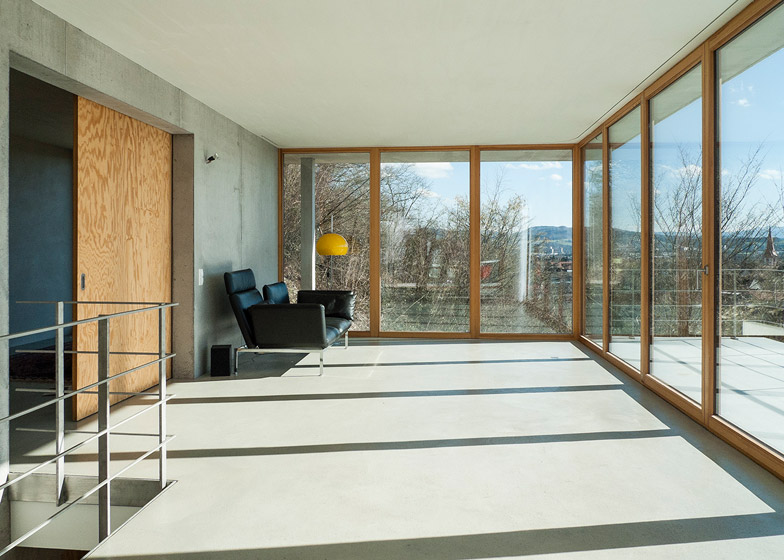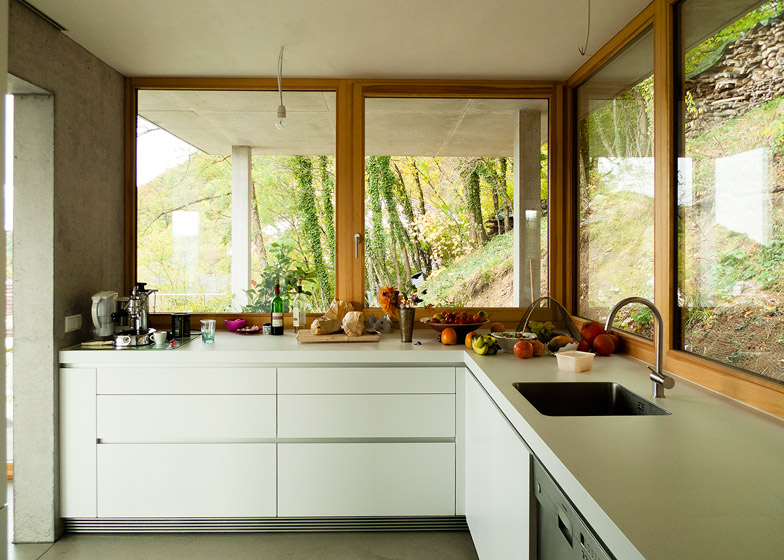This glazed house built from thick concrete slabs was designed by Swiss architect Gian Salis to follow the slope of a plant-covered hill in Germany's Rhine Valley (+ slideshow).
Located in the German region of Grenzach-Wyhlen on the banks of the River Rhine, House on a Slope sits on a hillside that was once used as a vineyard but is now overgrown with mature trees, shrubs and grasses.
From its perch on the hillside, large windows take in views over the valley and river, and across to the city of Basel across the Swiss border.
"The house was designed as if the structural work would have existed for some time and the interior outfitting came only now," explained Gian Salis, "thereby arose 'in-between rooms' that give the house its openness".
The thick concrete floor and roof slabs are supported at each corner by a square-section concrete column.
The concrete is left exposed on the exterior, while inside concrete walls are rendered with a smooth clay plaster and the floors covered in a cement screed. Doors and cupboards are made of a contrasting warm-toned pine plywood.
"As far as possible all of the materials are used in their raw states, and are intended to assume their natural patina over time," said the architect.
A garage and workshop are set into the ground floor of the property, with a small concrete patio shaded by the overhang of the floor slab from the level above.
Stepping stones lead up the hillside at the side of the building to a gravelled entrance for the first-floor bedrooms, while an ancillary path leads onto a terrace and into the living and dining areas on the uppermost floor.
Three bedrooms have pine plywood doors and are fronted by large windows that face towards the valley.
Wardrobes, dressing rooms and a bathroom are located behind an untreated concrete wall on the other side of a central hallway facing into the privacy of the earth slope. Cantilevering concrete steps planted into this wall lead up to the open-plan living and dining area above.
Upstairs, the glazed walls of the living space are set away from the edge of the concrete slab, creating an L-shaped terrace along the front and one side of the level.
Thin metal balustrades made from pieces of rolled stainless steel enclose the stairwell. This detail is carried onto the facade of the house, where railings run around the periphery of the terrace.
The protruding roof protects the interior spaces from overexposure to sunlight in summer, while also helping to retain heat in winter. Linen curtains and slatted blinds shade the glazing internally.
"The varying projections of the storey ceilings form terraces and protruding roofs, creating specific exterior spaces as counterparts to each interior space," said the architect.
Wide plywood doors slide across the cement floors to divide the kitchen from the dining area and sitting room.















